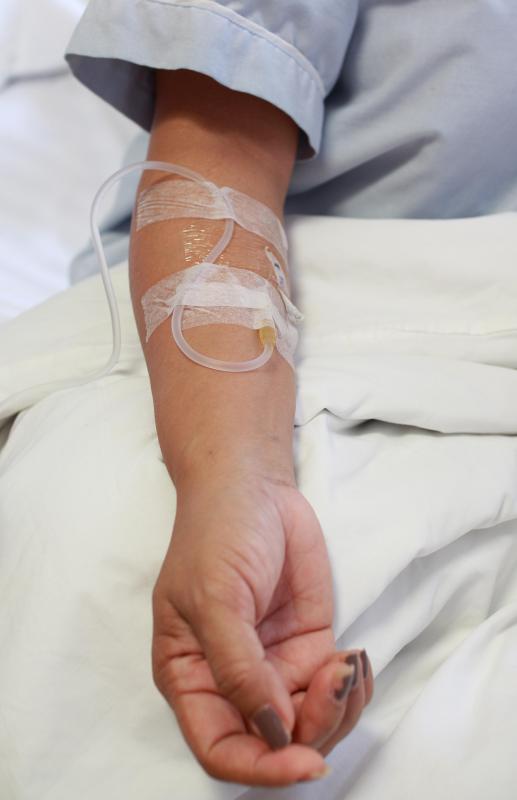At WiseGEEK, we're committed to delivering accurate, trustworthy information. Our expert-authored content is rigorously fact-checked and sourced from credible authorities. Discover how we uphold the highest standards in providing you with reliable knowledge.
What is Sleep Dentistry?
Sleep dentistry is a practice that uses various methods of dental sedation. There are a few forms of sleep dentistry, which helps the patient deal with dental anxiety. One method is intravenous (IV) sedation dentistry. Another type of sleep dentistry is oral sedation in the form of a tablet or pill.
Many patients fear having dental work done. This fear may make a person extremely anxious when having any procedure performed, whether it is a simple dental examination or major oral surgery. Sleep dentistry gives the patient options based upon his individual needs and concerns. The options available will each produce different results and are used for specific purposes.

For the patient who wishes to be conscious and aware, yet prefers to feel more relaxed, dentists can use inhalation sedation before a procedure. This form of sedation administered in sleep dentistry involves the inhalation of the gas nitrous oxide. This substance is often referred to as laughing gas. It works as an anesthetic by lessening sensitivity to pain.

Laughing gas is also known to produce a feeling of well being, and makes the patient feel inebriated and euphoric. When administered correctly, noxious oxide generally has no lasting effect and poses only a minimal risk to the patient. It is dispensed by the use of a mask placed over the nose of the patient. As a safety precaution, a patient will typically be advised not to consume food or water a few hours prior to his procedure.
Oral sedation involves the use of a prescription drug. The type of drug most commonly used is a form of benzodiazepine. Valium is a well-recognized type of this drug that many patients prefer.
This group of drugs, typically administered in the form of pills, tablets, or capsules relieve anxiety. They work by depressing the central nervous system, causing a sedative effect. Patients, however, should be aware of potential side effects or risks. Some individuals may have sensitivity issues with these drugs, or allergies that could pose a serious health danger. Another side effect is extreme nausea.
Another method used in sleep dentistry is intravenous sedation. This method will involve administering an anti-anxiety or pain-killing drug directly into the bloodstream via an IV needle. Results may vary, but typically the patient will be completely conscious and aware of the procedure, while becoming totally relaxed and at ease. One common side effect of IV sedation is loss of memory, which generally lasts until the effect of the drug has diminished.
AS FEATURED ON:
AS FEATURED ON:












Discuss this Article
Post your comments